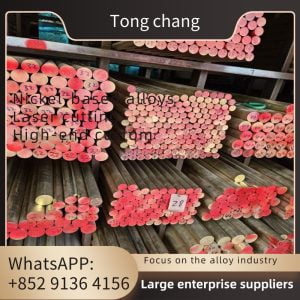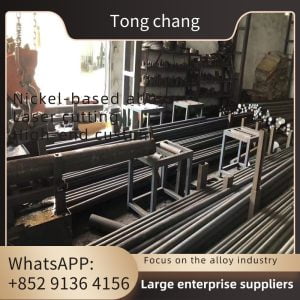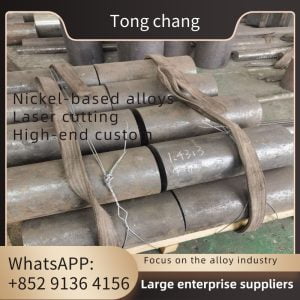| 产品名称 | 不锈钢椭圆头 | 标准: | 美国材料试验协会 A240 / 美国机械工程师学会 SA240 |
|---|---|---|---|
| 材料 | 304,304L,304H,316L,321,等等。 | O.D.: | 89 毫米至 10000 毫米 |
| W.T.: | 2 毫米至 300 毫米 | 技术 | 锻造 |
| 成型方法: | 热成型,冷成型 | 应用: | 石油/化工、水利、电力、锅炉、压力容器等。 |
| 强光 | 不锈钢椭圆头热交换器, 压力容器不锈钢椭圆封头, SA240 不锈钢椭圆形封头 | ||
用于压力容器和热交换器的 ASME SA240 321 不锈钢椭圆封头碟形端头
在 800-1500°F(427-816°C)温度下,碳化铬析出条件仍能保持良好的抗晶间腐蚀性能。由于成分中添加了钛,321 合金在碳化铬形成的情况下仍能保持稳定。
321 321 合金不锈钢因其优异的机械性能而具有在高温环境中工作的优势。与 304 合金相比,321 合金不锈钢具有更好的延展性和抗应力断裂性。此外,304L 还可用于抗敏化和晶间腐蚀。
合金 321(UNS S32100) 是一种非常稳定的不锈钢。在 800-1500°F(427-816°C)温度下,碳化铬析出条件下仍能保持良好的抗晶间腐蚀性能。由于成分中添加了钛,321 合金在碳化铬形成的情况下仍能保持稳定。347 合金则由于添加了 COQ 和钽而保持其稳定性。.
321 和 347 合金通常用于在 800-1500°F (427-816°C)高温下进行长期操作。如果应用只涉及焊接或短时间加热,则可使用 304L 代替。
321 和 347 合金的高温操作优势还取决于其良好的机械性能。与 304、304L 相比,321 和 347 具有更好的抗蠕变应力和抗应力断裂性能。这使得这些稳定的合金在稍高的温度下也能满足 ASME 锅炉规范和压力容器规范的要求。因此,321 和 347 合金的最高使用温度可达 816°C (1500°F),而 304、304 L 的最高使用温度则限制在 426°C (800°F)。
等效成绩
| 等级 | UNS 编号 | 老英国 | Euronorm | 瑞典 SS | 日本 JIS | ||
|---|---|---|---|---|---|---|---|
| BS | En | 没有 | 名称 | ||||
| 321 | S32100 | 321S31 | 58B, 58C | 1.4541 | X6CrNiTi18-10 | 2337 | SUS 321 |
化学成分
| 等级 | C | 锰 | Si | P | S | Cr | 莫 | 倪 | N | 其他 | |
|---|---|---|---|---|---|---|---|---|---|---|---|
| 321 | 分钟 最大 | – 0.08 | 2.00 | 0.75 | 0.045 | 0.030 | 17.0 19.0 | – | 9.0 12.0 | 0.10 | 钛×5(C+N) 0.70 |
机械性能
| 等级 | 最小拉伸强度(兆帕 | 屈服强度 0.2% 抗压强度(兆帕) min | 伸长率(%,50 毫米) min | 硬度 | |
|---|---|---|---|---|---|
| 洛氏 B (HR B) 最大值 | 最大布氏硬度 (HB) | ||||
| 321 | 515 | 205 | 40 | 95 | 217 |
物理特性
| 等级 | 密度(千克/立方米) | 弹性模量(GPa) | 平均热膨胀系数 (μm/m/°C) | 导热系数(瓦/米.K) | 比热 0-100 °C (J/kg.K) | 电阻率(nΩ.m) | |||
|---|---|---|---|---|---|---|---|---|---|
| 0-100 °C | 0-315 °C | 0-538 °C | 100 °C 时 | 在 500 °C 时 | |||||
| 321 | 8027 | 193 | 16.6 | 17.2 | 18.6 | 16.1 | 22.2 | 500 | 720 |
321 不锈钢是一种 Ni-Cr-Mo 奥氏体不锈钢,其性能与 304 非常相似,但由于添加了钛金属,使其具有更好的抗晶界腐蚀性能和高温强度。由于添加了金属钛,它能有效控制碳化铬的形成。
321 奥氏体不锈钢在大气中具有良好的耐腐蚀性,被广泛应用于石油化工、电力、桥梁和汽车等行业。不过,"不锈钢 "也不是绝对的,由于特殊的服役环境,不锈钢也会腐蚀。介质浓度、pH 值、温度等因素都会对不锈钢的耐腐蚀性产生较大影响。例如,在 450~850℃ 的敏化温度范围内长时间使用,不锈钢会发生晶间腐蚀。其机理是 C 与 Cr 在晶界结合形成 Cr23C6 并析出,使晶界的 Cr 含量降低,即所谓的 "贫铬"。铬元素是抑制晶间腐蚀的主要元素之一,当晶界的铬含量低于 12%,晶间腐蚀的概率就会增加。
应用:
石油和天然气工业设备
海上平台
热交换器
水下设备
消防设备
化学加工业
餐具和管道行业
海水淡化,高压反渗透设备和海底管道
能源行业,如发电厂脱硫脱硝 FGD 系统、工业洗涤系统、吸收塔
机械部件(高强度、耐腐蚀、耐磨损部件)







